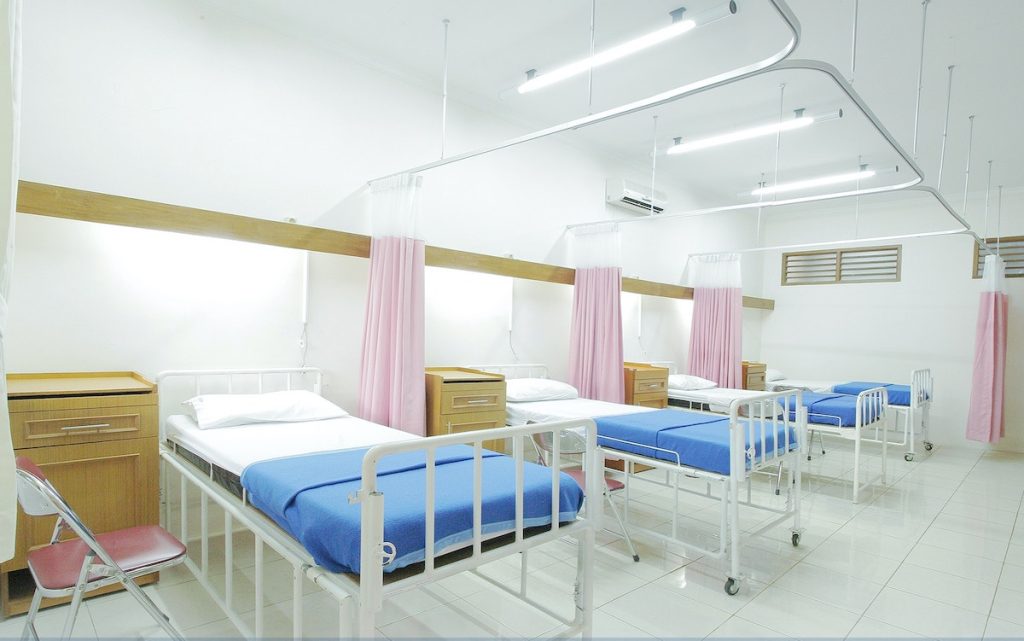Hospitals serve as refuges for patients and seek their recovery and health. Ironically, these places can sometimes be the sources of infections, posing risks to both patients and medical professionals. There are tech gadgets that redefine the way we live, and some can be used alongside specific game plans to tackle this issue. This article explores some of the specific strategies used to reduce infections in hospitals.
The Role Of Curtains
Curtains make frequent contact with various hands and the surrounding environment. As a result, they can inadvertently become hotbeds for pathogens. Given the nature of hospital fabrics, they offer a conducive environment for the survival of infectious agents. This especially applies when they remain unchanged or uncleaned for prolonged periods. Hospitals should therefore embed strict protocols for the regular cleaning or changing of their curtains. This becomes even more crucial if a previous occupant of the space has an infectious condition.
To combat the risks, many modern hospitals are turning to antimicrobial curtains. They’re treated with substances that inhibit the growth of harmful microorganisms. In terms of the curtain tracks used in hospitals, those that contain antimicrobial fabric are compatible with all patient lift systems. There are patented wall-mounted versions that are quieter than the traditional grommeted versions. Finally, it’s important to educate the hospital staff about the risks associated with contaminated curtains, and the need for periodic replacements.
Hand Hygiene
This is the cornerstone of infection control in any healthcare setting. Hand hygiene is advocated vigorously by global health organizations like WHO and CDC. As a result, the significance of regular, thorough handwashing cannot be overstated. Every individual within the hospital premises – from surgeons and nurses to patients and their visitors – plays a role in this collective defense against infections.
For this to be effective, hospitals must ensure easy accessibility to hand sanitizing stations. They must be armed with alcohol-based rubs, and placed by the hospital’s entrance. They should also be located in the corridors leading to patient rooms. It’s important to conduct periodic training sessions for all staff, reiterating the techniques and importance of hand hygiene. Hospitals should also engage in awareness drives by using posters and digital displays. These can act as constant reminders, encouraging everyone to uphold this vital practice.
Screening And Patient Isolation
The early identification of potentially infectious cases can drastically curtail the spread of diseases within a hospital. There should therefore be immediate and efficient screening of patients. This is especially important for those exhibiting symptoms of contagious ailments. Once one is identified or even suspected, the following step should be swift isolation.
This involves more than just segregating the patient. A comprehensive isolation protocol includes using dedicated medical equipment for the patient. It includes having a specific team of healthcare workers attending to them and ensuring stringent sanitation measures in and around the isolation area. This multi-pronged approach ensures that the infection’s spread is minimized.
Regular Training And Awareness Programs
In terms of infectious diseases, new strains and challenges emerge continually. To stay ahead in this ever-evolving battle, continuous education becomes paramount. Medical staff should be routinely updated about the latest infection control practices. Discussion should also be made regarding any newly identified infectious agents, and the best countermeasures against them, such as perhaps working with an infection control service provider to determine any additional measures or changes that you could put in place to improve your existing practices.
However, education shouldn’t be limited to just medical professionals. As we said earlier, patients and their families also play a role in a hospital’s ecosystem. They too should be made aware of the importance of certain practices and precautions. By distributing informational pamphlets or leveraging digital platforms, hospitals can amplify the reach and impact of these educational efforts.
Environmental Hygiene
Ensuring a hospital’s cleanliness goes far beyond the cosmetic appeal. Its physical environment acts as the first line of defense against infections. Every corner – from the waiting rooms and corridors to the intensive care units and operation theaters – should resonate with hygiene.
Hospital-grade disinfectants should be used, plus advanced cleaning tools like ultraviolet light devices. Cleaning high-contact surfaces multiple times a day should be ingrained in the hospital’s cleaning regimen. Additionally, the significance of air quality can’t be overlooked. Investing in top-tier air filtration systems ensures that potential airborne pathogens don’t find their way through the ventilation. In turn, this adds an extra layer of protection for all.
Antibiotic Stewardship
The rampant and sometimes unnecessary use of antibiotics has ushered in a concerning era of antibiotic-resistant bacteria. To combat this looming threat, hospitals must be staunch advocates and practitioners of antibiotic stewardship. This involves a meticulous approach where antibiotics are prescribed judiciously.
This ensures their necessity and appropriateness in terms of the specific antibiotic used. It also ensures the correct dosage and duration of the treatment. There should be regular reviews of antibiotic protocols, coupled with training sessions for medical professionals. This can ensure that the hospital remains a bastion against the rise of antibiotic-resistant infections.
Vaccination Programs
In the fight against infectious diseases, vaccines are invaluable allies. For illnesses where they’re an option, it can be a game-changer to ensure comprehensive vaccination coverage for healthcare workers.
Making immunizations (like the annual flu shot) mandatory for staff can safeguard their health. It can also drastically reduce the chances of them becoming inadvertent transmission agents to patients. Many of the latter might already be in a vulnerable state.
Audits And Feedback Loops
In terms of infection control, a system of checks and balances is crucial. Regular audits should focus on evaluating the efficacy of current control measures. In turn, this can provide invaluable insights. These audits can identify potential areas of concern, ensuring timely interventions.
Hospitals should create open channels of communication where staff can provide feedback or voice concerns. This can prove beneficial, as they offer a ground-level perspective that might sometimes be overlooked in broader strategies.
Because hospitals should be centers of healing and recovery, they require a meticulous, multi-dimensional approach to infection control. They should amalgamate stringent practices and provide continuous education. Thanks to these proactive measures, hospitals can create an environment where health thrives and infections are avoided.


